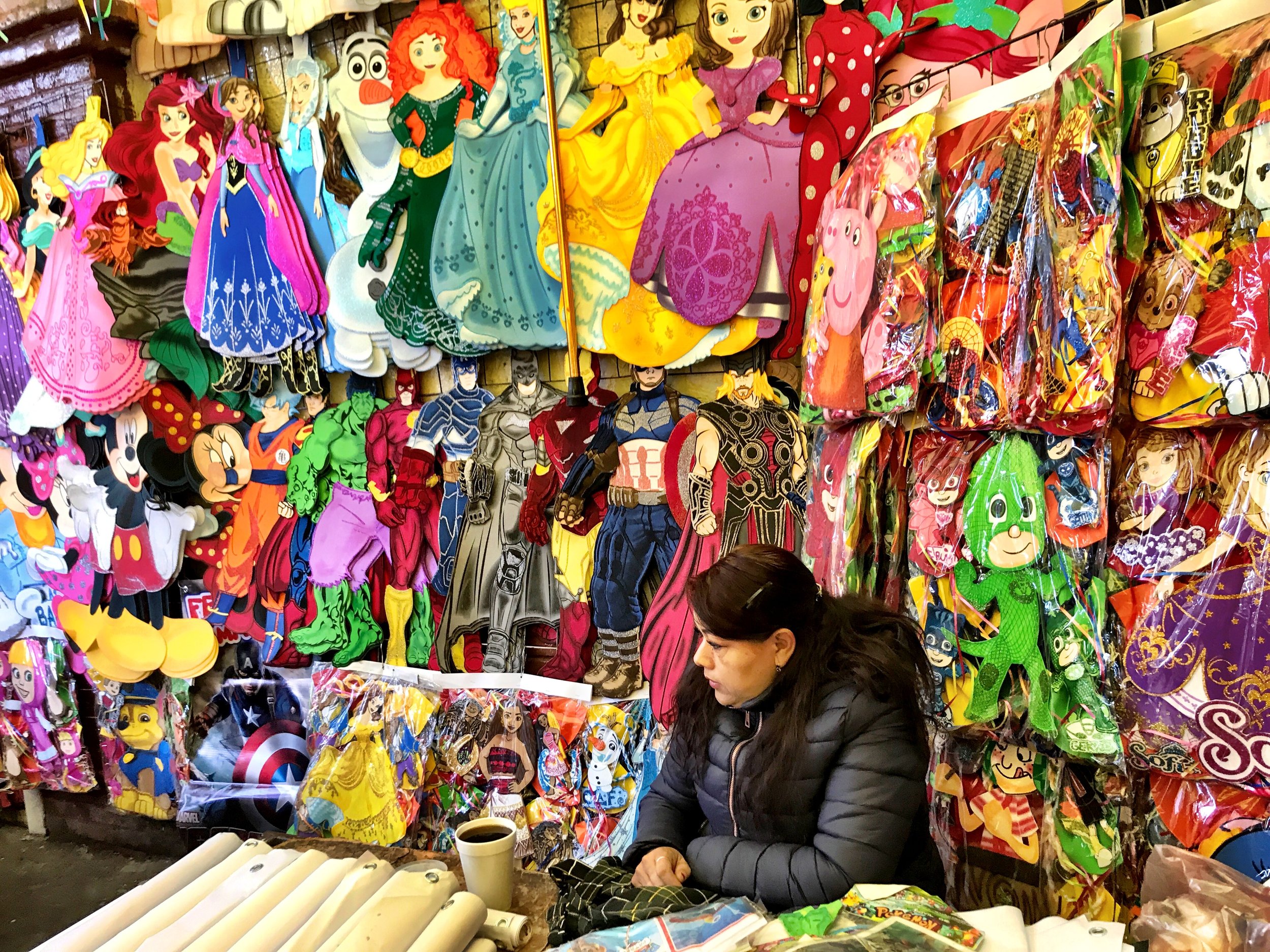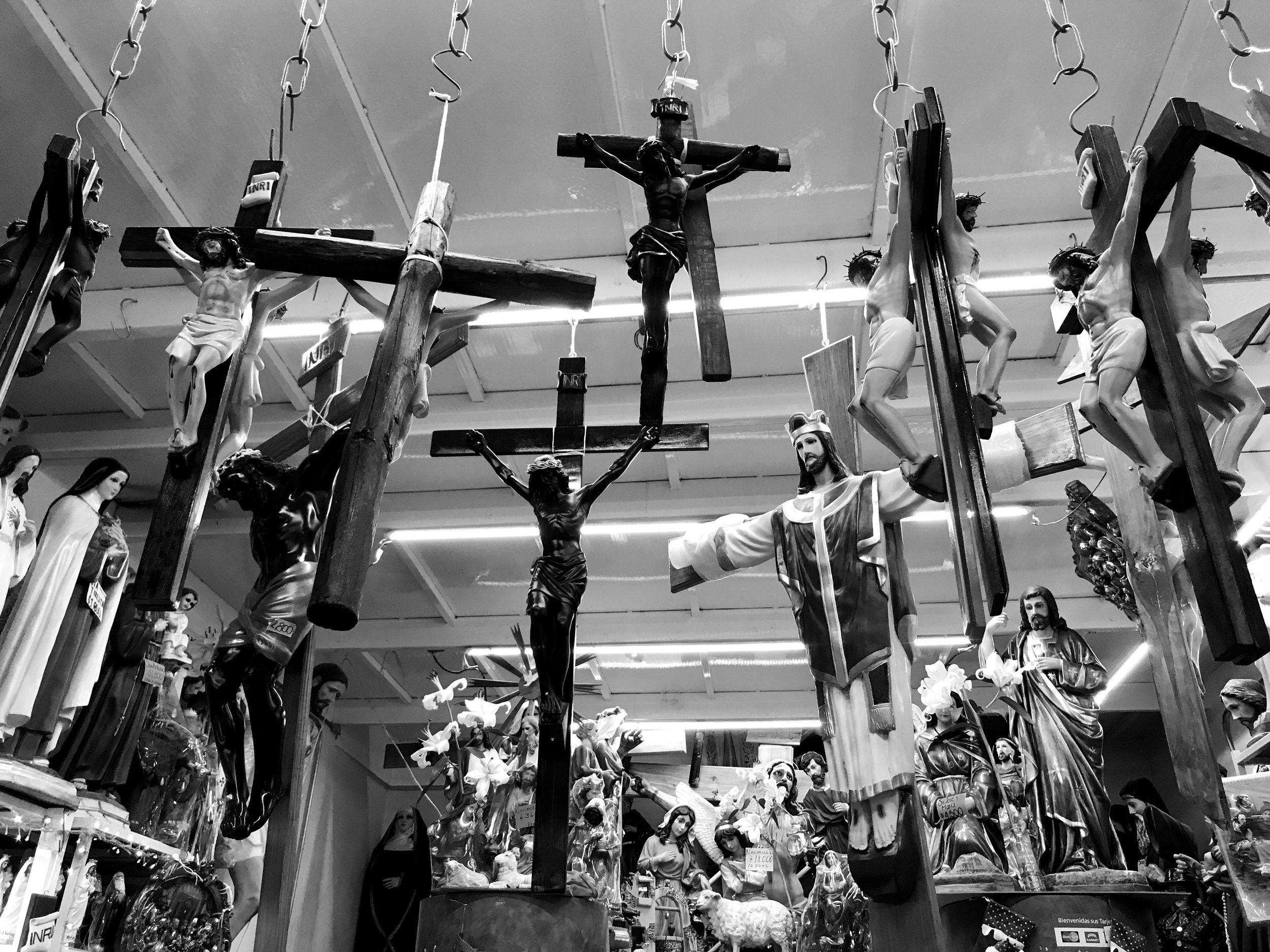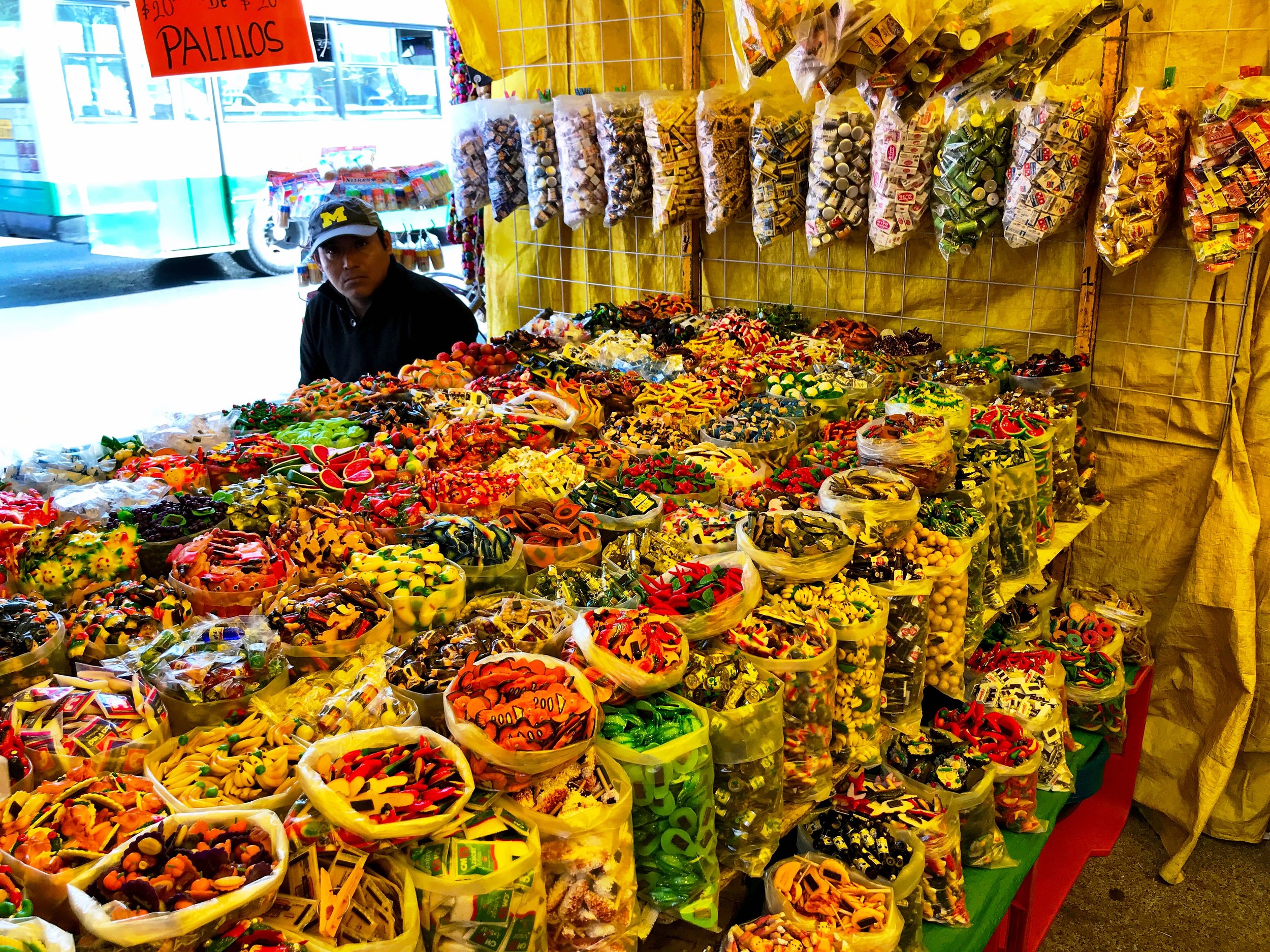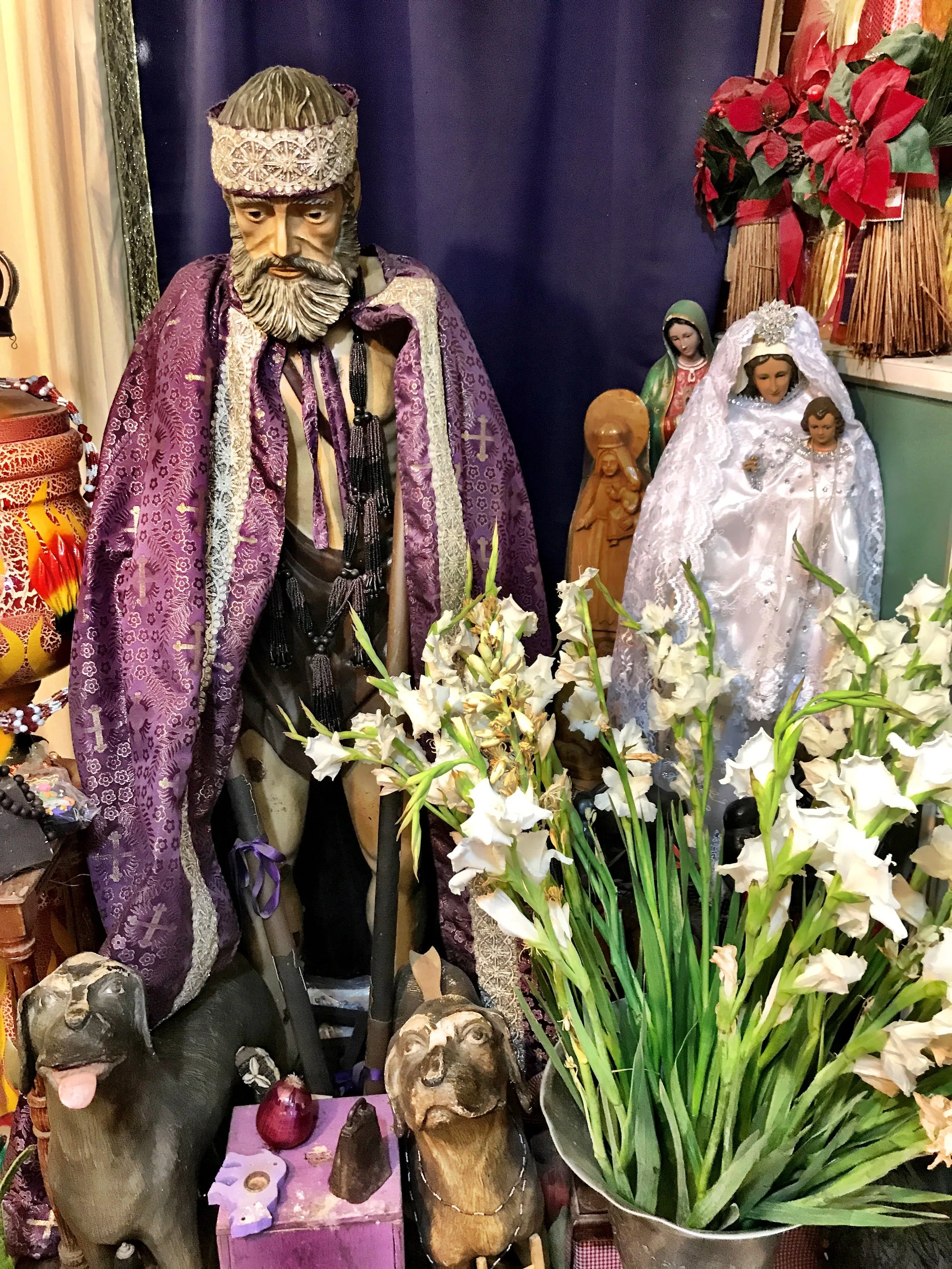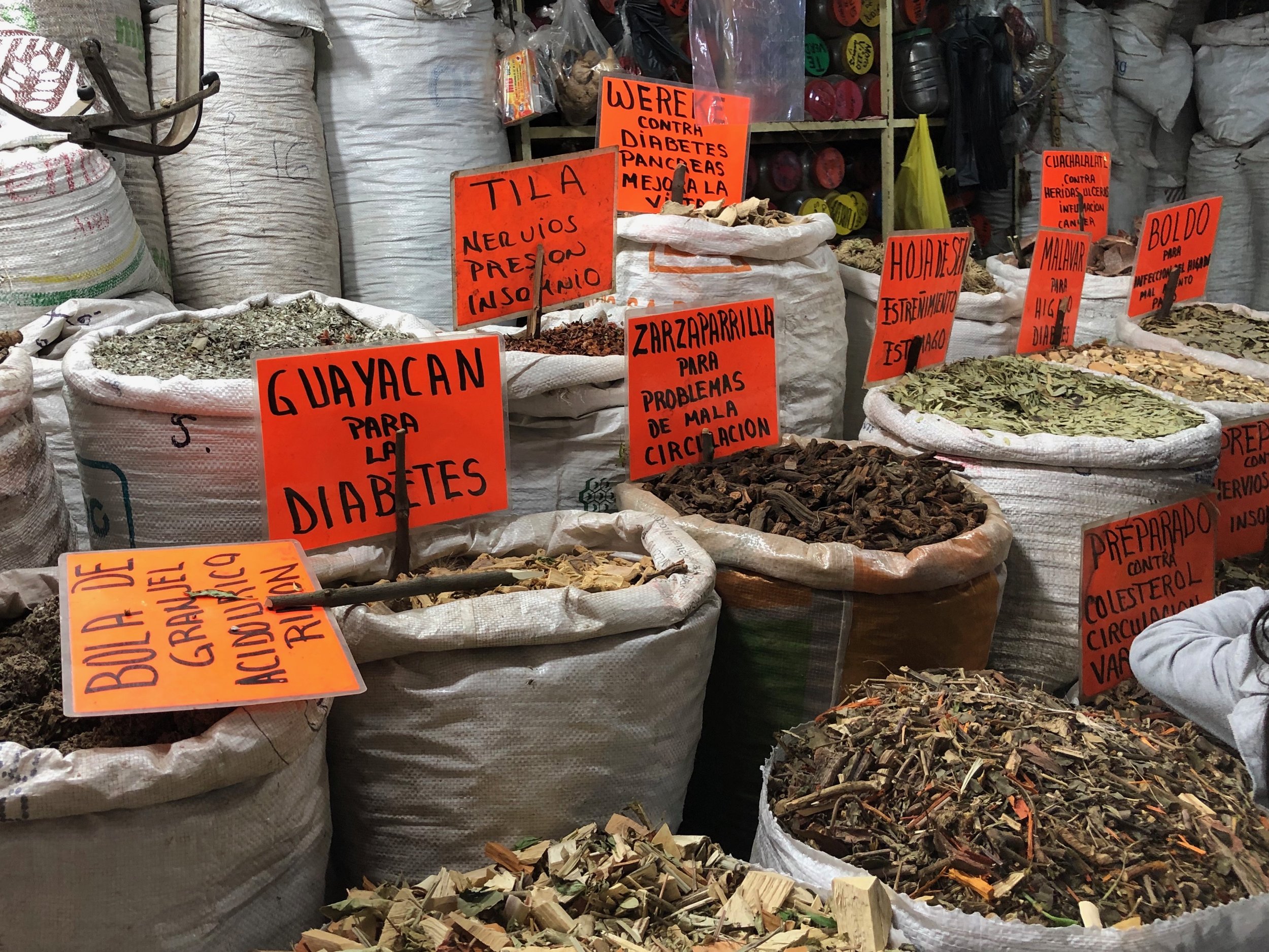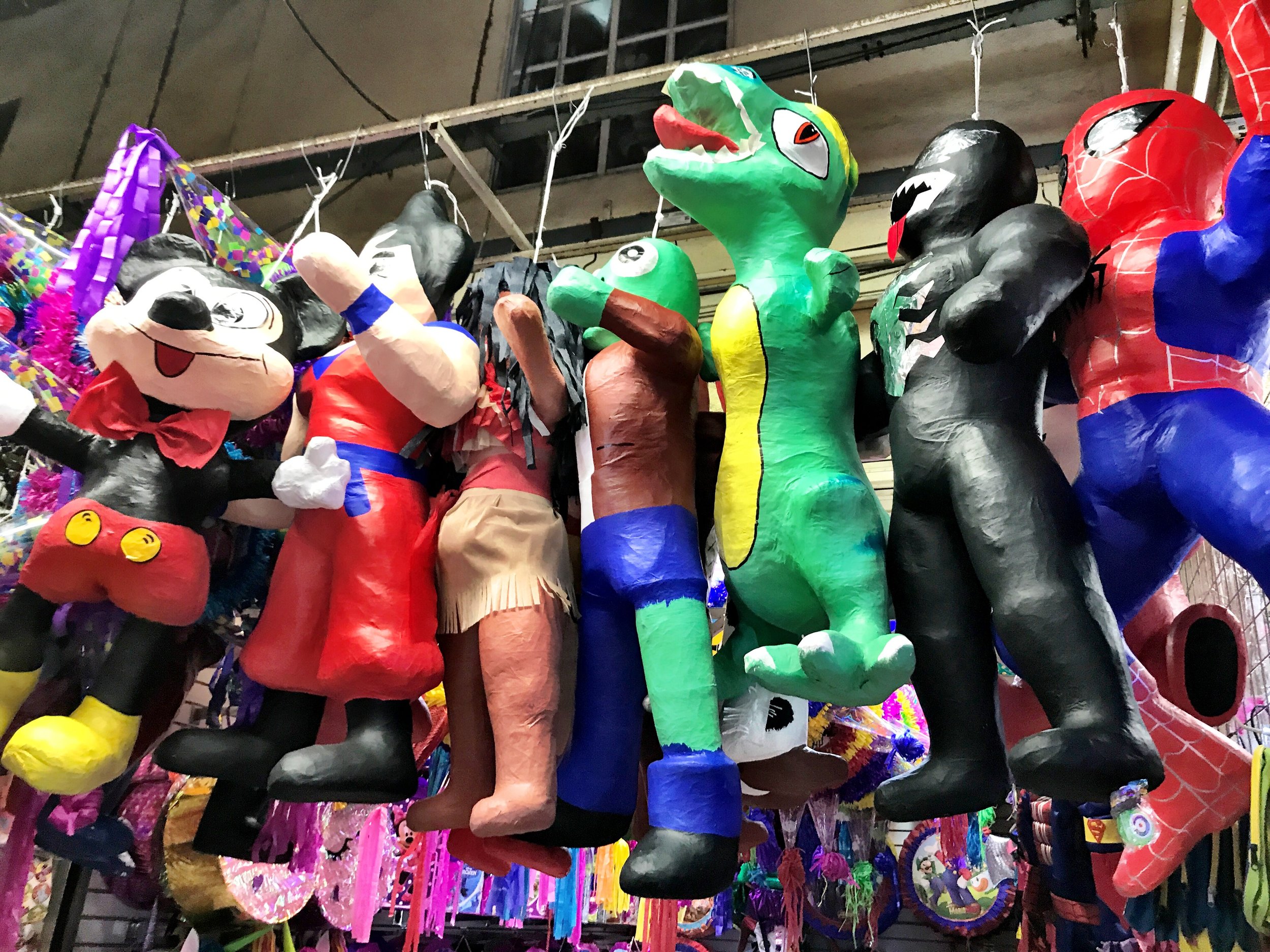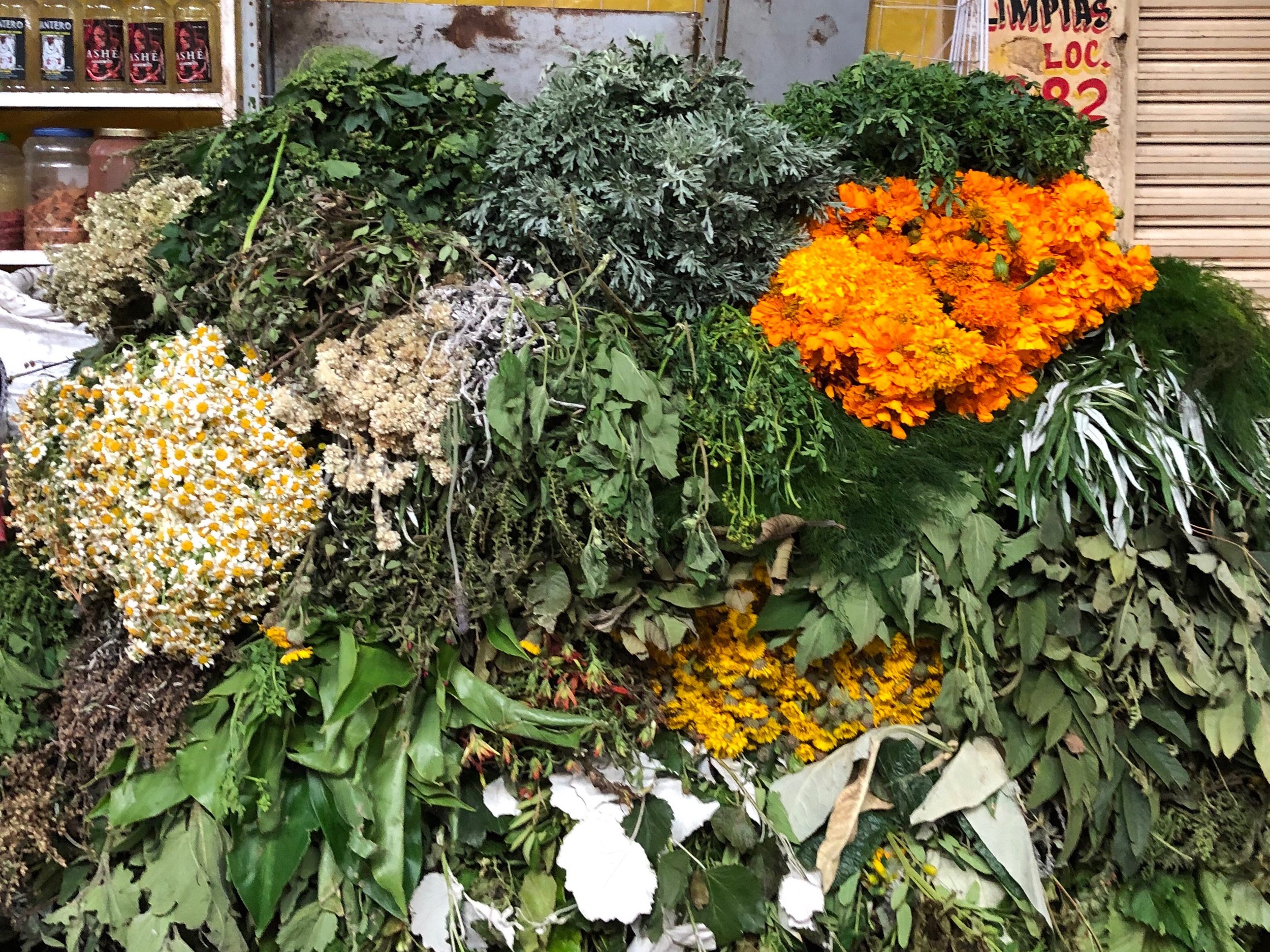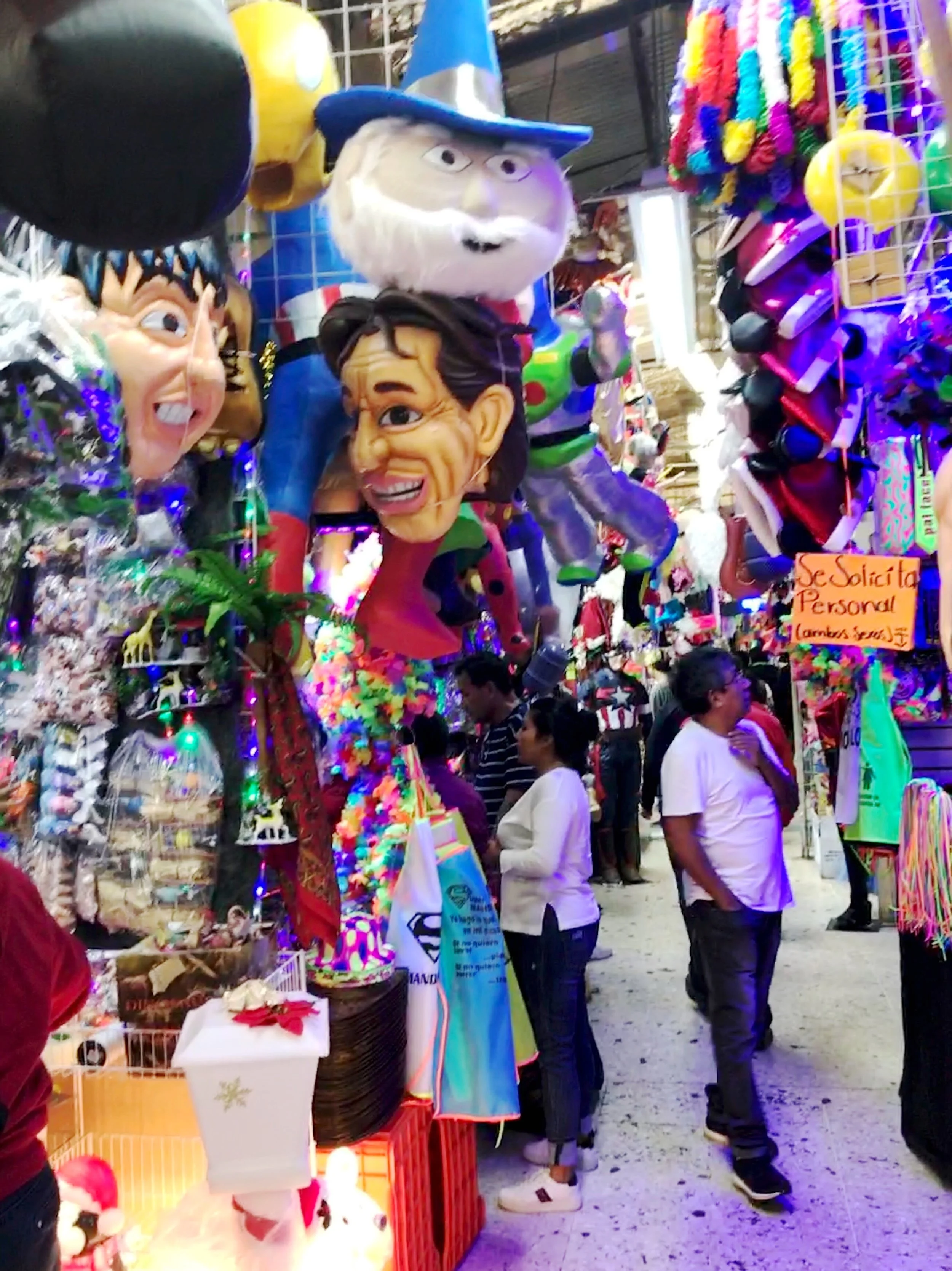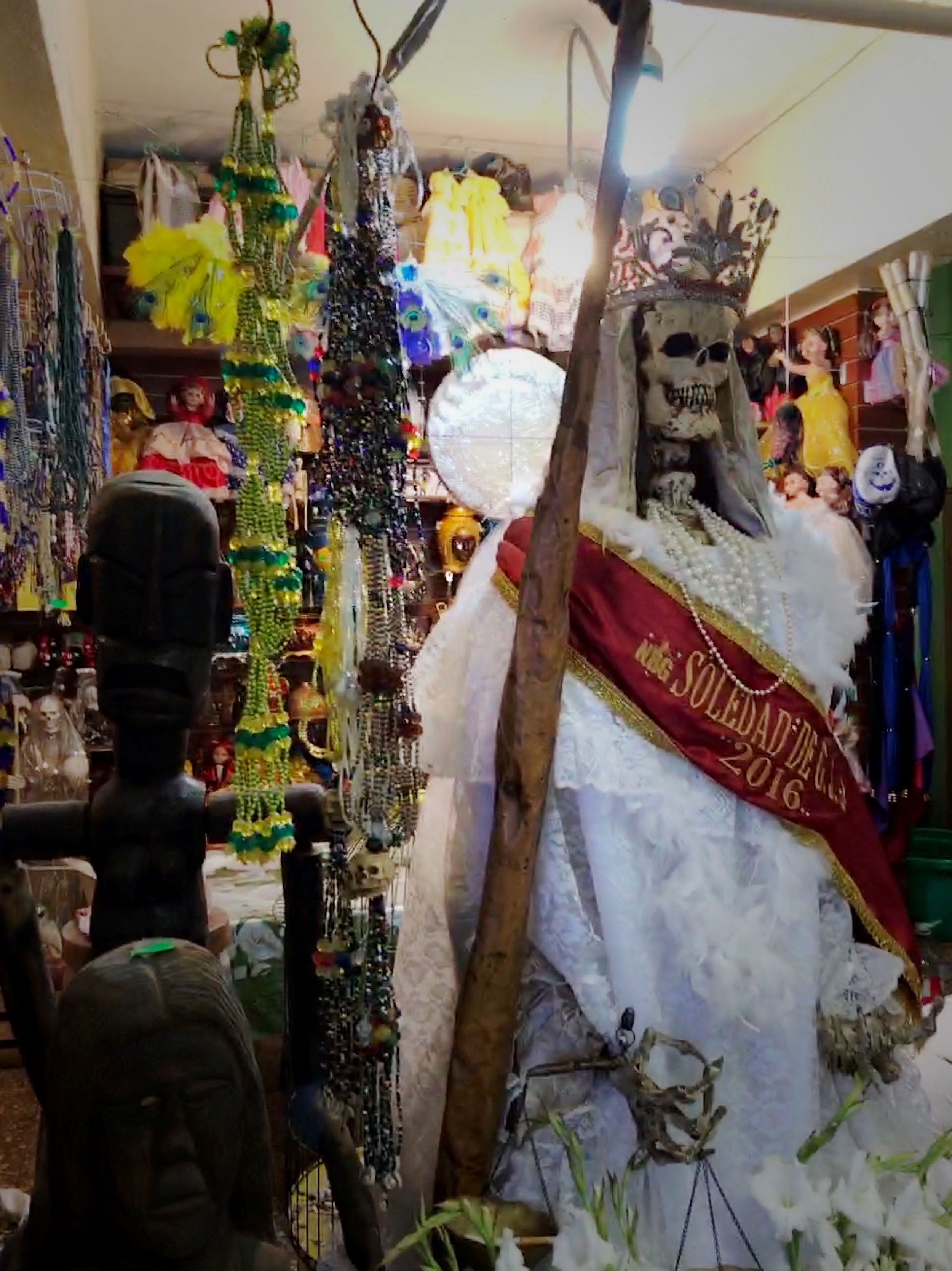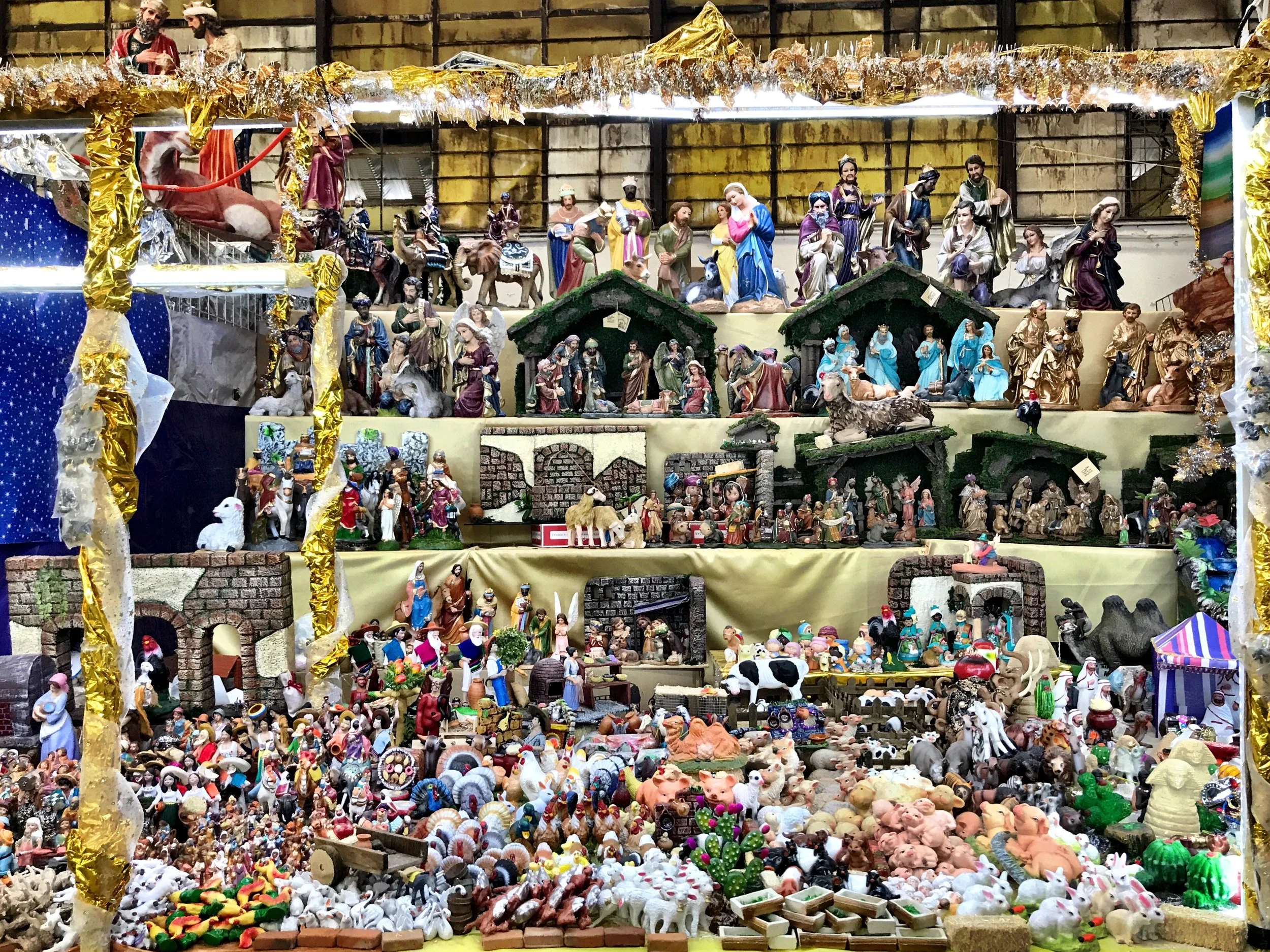Head to the back left corner to enter a world of magic potions, Santeria, brujeria, voodoo dolls and Santa Muerte.
When you start seeing skeletons, you’ll know you’ve found the witch market.
Ever since Duke and I stumbled upon a witch market in a corner of the souk in Marrakech, Morocco, we’ve been addicted.
What’s a witch market, you ask? It’s sort of like a farmers market — only with a lot less local produce and more skulls and potions. Filled as they are with often disturbing items, witchcraft markets appeal to our warped sensibilities.
“We noticed a life-size skeleton wearing a wedding dress, a string of pearls around its neck and a tiara atop its skull.
We had found the witch market.”
Our Uber dropped us off at the sprawling Mercado Sonora in Mexico City in front of a line of yellow awnings. At first we wondered if we would even be able to find the section that contained the witch market. Stall after stall stretched out before us, filled with brightly colored, super-sized stuffed animals like those you hope your honey will win for you at a carnival. Some stalls had lights swirling like a discotheque and housed banners and other decorations that screamed, “¡Feliz Cumpliaños!” Women sat under large cutouts of Disney princesses, Mickey Mouse and superheroes. Piñatas hung from the ceiling. Men tried to tempt us with rows of technicolor candies.
The back right corner of the Sonora Market has live animals in cages.
As we wandered toward the far right-hand corner of the massive market, we started noticing a disturbing trend: This was where live animals were sold. We witnessed a young boy dump a cardboard box of full of puppies onto the floor and hastily put them into a cage near crates packed with birds, lizards, cats, rabbits and goats.
I stopped to take a picture of a cage full of mangy-looking puppies, but a man wagged his finger at me, saying, “No fotos” in a stern voice.
“I’m not surprised,” Duke mumbled. “He doesn’t want documentation of how inhumane this is.”
It really was quite depressing. So we were relieved when, as we moved to the left, still at the back of the market, we noticed a life-size skeleton wearing a wedding dress, a string of pearls around its neck and a tiara atop its skull.
We knew we were in the right place. We had found the witch market.
The Catholic church isn’t fond of Santa Muerte and has called her worship blasphemous.
Santa Muerte and Santería
The figure we happened upon is Santa Muerte, the goddess of death, a popular figure in Mexico. The stall took up a corner space, more of a small boutique. We looked around, seeing strings of beads, skeletons carved from bone (Duke still regrets not having bought one), candles in glass containers and a stone head with cowry shells for its eyes and mouth. I called Duke over. This last item was just the type of unexpected and slightly disturbing thing that he would love. We of course purchased it, for 100 pesos, or $5.
By the way, at markets in Mexico City, unlike those in Southeast Asia or Morocco, for instance, you’re not expected to bargain. The prices are set, but that’s OK, as you’ll find that most of them are quite reasonable.
The man who ran the stall was friendly, and grabbed a pen and paper when I asked him to write down what the head is called.
“Elegua,” he scribbled. I later found out he’s the god of beginnings and endings in Santería. He’s a bit of a trickster, which explains why I was so drawn to him.
Stalls filled with Catholic icons are side by side with ones selling Santería and brujeria totems.
We made our way through the labyrinth of stalls, surprised that they didn’t connect in any sort of logical manner. You would wind through a narrow space and then find yourself at a dead end, having to backtrack. The market was pretty crowded when we were there on a Sunday morning — “These are all the naughty people who should be in church,” I told Duke — and there was still a bit of jostling in the corridors as people stopped to look at goods or tried to pass by. Every now and then, a vendor would appear, carrying a stack of large boxes, and you’d have to press yourself against the wall to let them pass. It wasn’t long before Duke was feeling claustrophobic.
But I wasn’t done exploring this weird and wonderful market.
You can buy a baby Jesus in all sizes and skin colors.
Brujeria Meets Catholicism
What’s strange about brujeria, or Mexican witchcraft, is that it exists alongside Catholic beliefs. Whereas the mere whiff of something witchy prompts Christians in the United States to scream, “Satan!” Mexicans are much more sanguine. In the heart of the witch market, you’ll find statues of saints and baby Jesus dolls, Virgins of Guadalupe and crucifixes galore right next to the scythe-wielding Santa Muerte, looking like the Grim Reaper’s soulmate.
Santería and similar religions started amongst descendants of African slaves in the Caribbean.
Mexican Catholics don’t see any problem with mixing the worship of Jesus and the Virgin Mary with magic potions.
As we wandered down a narrow corridor, something caught my attention: what was obviously a Barbie doll, entirely covered in red ribbon with a few nails stuck into it. The vendor told me it was a voodoo doll, but an expensive one, he said, apologetically. You see, it cost 100 pesos, or a whopping $5. He showed me a package of smaller, cheaply made dolls, pointing out how much more affordable they were. But I naturally had to have the other one.
You’ll see quite a few of these creepy but artistic dolls hanging in stalls. They’re representations of Santería deities.
Here’s Lucero Mundo, god of the crossroads and bestower of spiritual power.
At stalls in the witchcraft market, creepy dolls hung on the wall, some with their eyes and mouths sewn shut. One that immediately appealed to me had its face painted half red, half black. Sage smoke from a burning smudge stick filled the dark corridor, making me a little lightheaded. The vendor appeared intimidating — an intense young man with long hair, numerous piercings, tattoos down his arms and triangular studs in his earlobes. But he turned out to be friendly and wrote down the name of the god represented by the red-and-blacked-faced doll: Lucero Mundo, or Light of the World. He’s a deity from Palo, a Santería-like religion that originated in Cuba amongst descendants from the Congo. A god of the crossroads, Lucero witnesses everything, and without his consent, no spiritual power will flow. He seems connected with the aforementioned Elegua.
Whether you want money or love, there’s a potion you can buy in the witch market.
Potions and Notions
Brightly colored bottles and boxes promised the solution to any problem. Got a crush? Spray some Ven a Mi (Come to Me). Want a successful small business? Spritz some Llama Cliente (Call Customers).
I’m not sure if you’re supposed to drink these potions, but I wouldn’t put those toxic-looking, neon-colored bottles to my lips no matter how desperate I was.
Head to the back left corner of the Mercado Sonora to find the witch market.
“I was thinking there’d be more desiccated animals,” Duke sighed. These are the types of things that disappoint us. But then, as if he had conjured it by sheer willpower, we almost walked right into some sort of flayed ball of fur, which looked more like a cross between roadkill and beef jerky. It was hardly recognizable as having once been a small animal. We have a taxidermied squirrel climbing our wall, a dried-out bat in our living room and a desiccated chameleon inside our glass-topped coffee table. But this macabre monstrosity was too much, even for us. –Wally
Nacimientos, or nativity scenes, galore
Mercado Sonora and the Witch Market
Fray Servando Teresa de Mier 419
Merced Balbuena
15810 Ciudad de México, CDMX
Mexico


